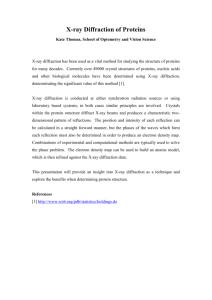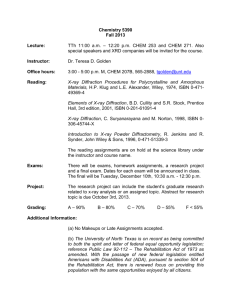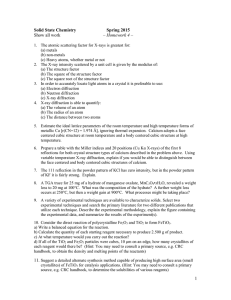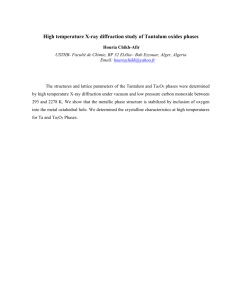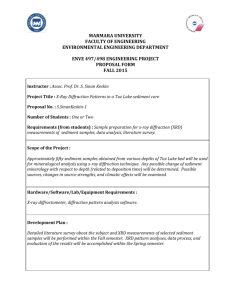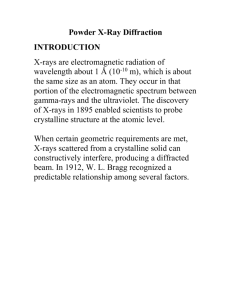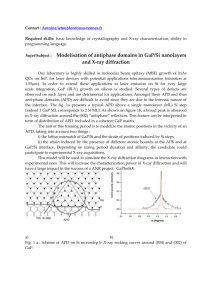and chemical bonding
advertisement
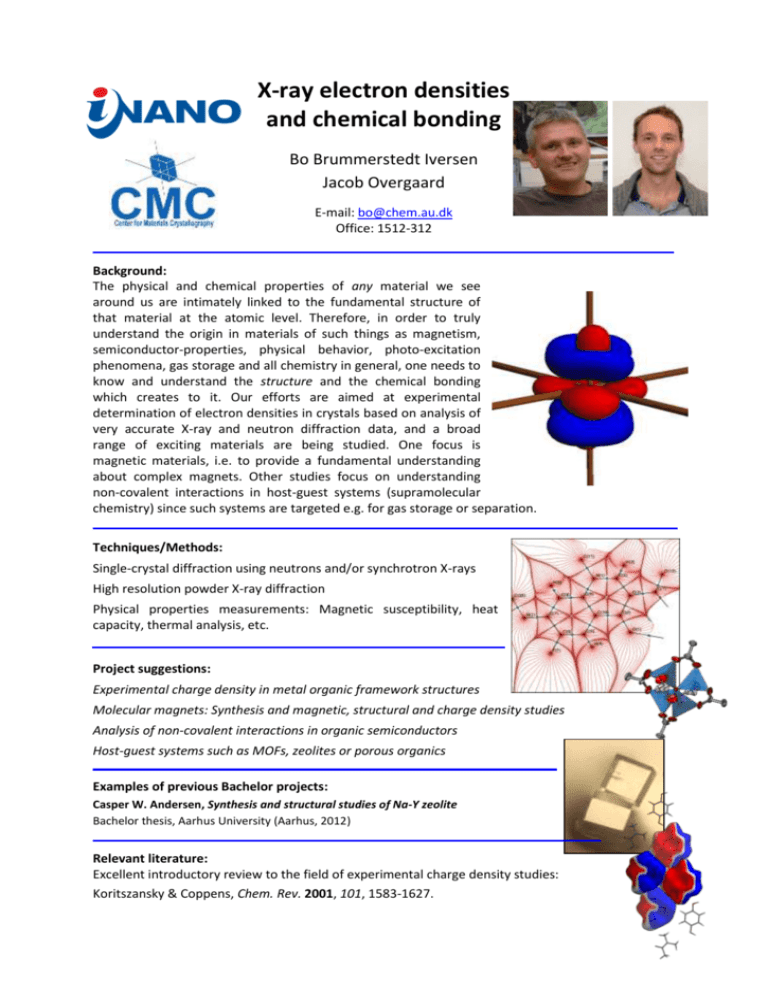
X-ray electron densities and chemical bonding Bo Brummerstedt Iversen Jacob Overgaard E-mail: bo@chem.au.dk Office: 1512-312 Background: The physical and chemical properties of any material we see around us are intimately linked to the fundamental structure of that material at the atomic level. Therefore, in order to truly understand the origin in materials of such things as magnetism, semiconductor-properties, physical behavior, photo-excitation phenomena, gas storage and all chemistry in general, one needs to know and understand the structure and the chemical bonding which creates to it. Our efforts are aimed at experimental determination of electron densities in crystals based on analysis of very accurate X-ray and neutron diffraction data, and a broad range of exciting materials are being studied. One focus is magnetic materials, i.e. to provide a fundamental understanding about complex magnets. Other studies focus on understanding non-covalent interactions in host-guest systems (supramolecular chemistry) since such systems are targeted e.g. for gas storage or separation. Techniques/Methods: Single-crystal diffraction using neutrons and/or synchrotron X-rays High resolution powder X-ray diffraction Physical properties measurements: Magnetic susceptibility, heat capacity, thermal analysis, etc. Project suggestions: Experimental charge density in metal organic framework structures Molecular magnets: Synthesis and magnetic, structural and charge density studies Analysis of non-covalent interactions in organic semiconductors Host-guest systems such as MOFs, zeolites or porous organics Examples of previous Bachelor projects: Casper W. Andersen, Synthesis and structural studies of Na-Y zeolite Bachelor thesis, Aarhus University (Aarhus, 2012) Relevant literature: Excellent introductory review to the field of experimental charge density studies: Koritszansky & Coppens, Chem. Rev. 2001, 101, 1583-1627.
